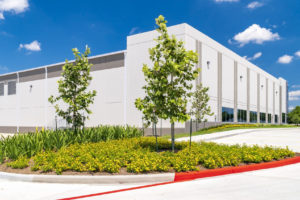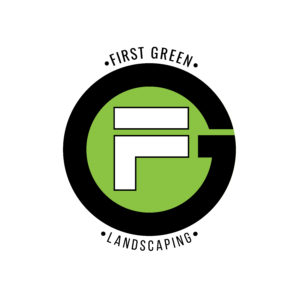 What do you picture when you think of industrial warehouses and buildings? Maybe you imagine long buildings surrounded by concrete and busy loading docks? Industrial sites and big warehouses have their own landscaping needs. Typically, building owners want them to look good while also being easy to maintain, tough, and resistant to drought. It can seem like a hard list of needs to meet if you aren’t familiar with this kind of landscaping. Thankfully, we’ve created a list of landscaping tips for industrial settings to help you come up with some ideas for your space.
What do you picture when you think of industrial warehouses and buildings? Maybe you imagine long buildings surrounded by concrete and busy loading docks? Industrial sites and big warehouses have their own landscaping needs. Typically, building owners want them to look good while also being easy to maintain, tough, and resistant to drought. It can seem like a hard list of needs to meet if you aren’t familiar with this kind of landscaping. Thankfully, we’ve created a list of landscaping tips for industrial settings to help you come up with some ideas for your space.
Industrial Landscaping Tips…
#1: Plant Trees
When you plant trees, you add a vertical element to oversized, low factories and buildings. This creates the illusion that the buildings are taller than what they are. At night, these buildings are typically well lit. Trees cast unique shadows upon them creating interesting shadows on dull walls. What kinds of trees are best for this? Blue Atlas Vedas, Deodar Cedars, and Japanese Maples are great choices. Not to mention, the cedars are evergreens, so they stay green even during unfavorable, wintry conditions. Large shrubs are a great option for a low maintenance, elevated look. You might also consider using your landscaping to add a pop of color to your landscape. Often, these buildings are plain so adding a plant like a Red Twig Dogwood will brighten up those dull colored walls.
#2: Creating A Good First Impression
#3: Landscaping To Highlight Your Signage
Your signage is what you use to share your brand and welcome visitors to your location. Good landscaping is hard to miss– and is a real head-turner. Color is sure to impress but even your signage landscaping has to be easy to maintain and durable. For a lush and intriguing look, layer plants around your signage using trees, perennials, shrubs, and ground flowers. A good perennial to add is nepeta as it is tough, drought tolerant, easy to maintain, and blooms well with lavender during the dry, summer months. Catmint is also known to attract butterflies but is resistant to deer. Variegated liriope as a ground cover will add vibrant yellow stripes to your landscape while keeping the interest all year since it is an evergreen. Want to make your sign look bigger? Plant shrubs on each side to really make it stand out.
#4: Keep The Rodents Away
Unfortunately, rodent issues are pretty common. If they have become a nuisance around your industrial site, avoid planting dense ground cover near your building as this is the perfect place for them to nest and hide. Instead use river rock, gravel, or woody perennials as they aren’t as dense and have less to offer a pesky rodent.
#5: Trim Your Branches For Safety
#6: Dealing With Drainage Issues
#7: Parking Lot Islands
#8: Add Color To Your Landscape
Pops of color are a sure way to catch eyes and make your property looks well-maintained. Keep your landscaping colorful all year with seasonal, vibrant plants. In the spring, it’s all about bright bulbs. Summer is great for stunning purple and pink petunias. Mums or dwarf nandina plants are good options in the fall. Winter is great for evergreens and other shrubs that can withstand the weather.
#9: Keep Your Employees Engaged
#10: Landscapes And Lighting
For industrial parks, landscaping includes adding basic lighting during the process. Provide enough lighting to keep the space safe. Aside from safety needs, use lighting to highlight any interesting architectural features and landscaping. These are great ways to make your property look more intriguing.
#11: LEED (Leadership in Energy & Environmental Design) Needs
More and more buildings are making the shift to obtain their LEED certification. How can you include these standards in your landscaping? Replace your turf with native plants. They are able to handle the heat from the parking lot, require minimal water, and reduce your need for mowers which minimizes emissions from your lawn gear. Many large commercial businesses are looking for ways to shrink their carbon footprint. Even when they aren’t pursuing LEED certification, they are practicing ways to use less energy.
Contact us (859-292‐8556) today for a free consultation!
—
 About First Green Landscaping
About First Green Landscaping
First Green Commercial Landscaping is a locally owned leading provider of lawn care and landscaping services in the Cincinnati/ Northern Kentucky area. We provide superior customer service and strive to build long term business relationships with our clients.
- Lawn Care
- Landscape Maintenance
- Snow Removal
>> Learn More

 About First Green Landscaping
About First Green Landscaping